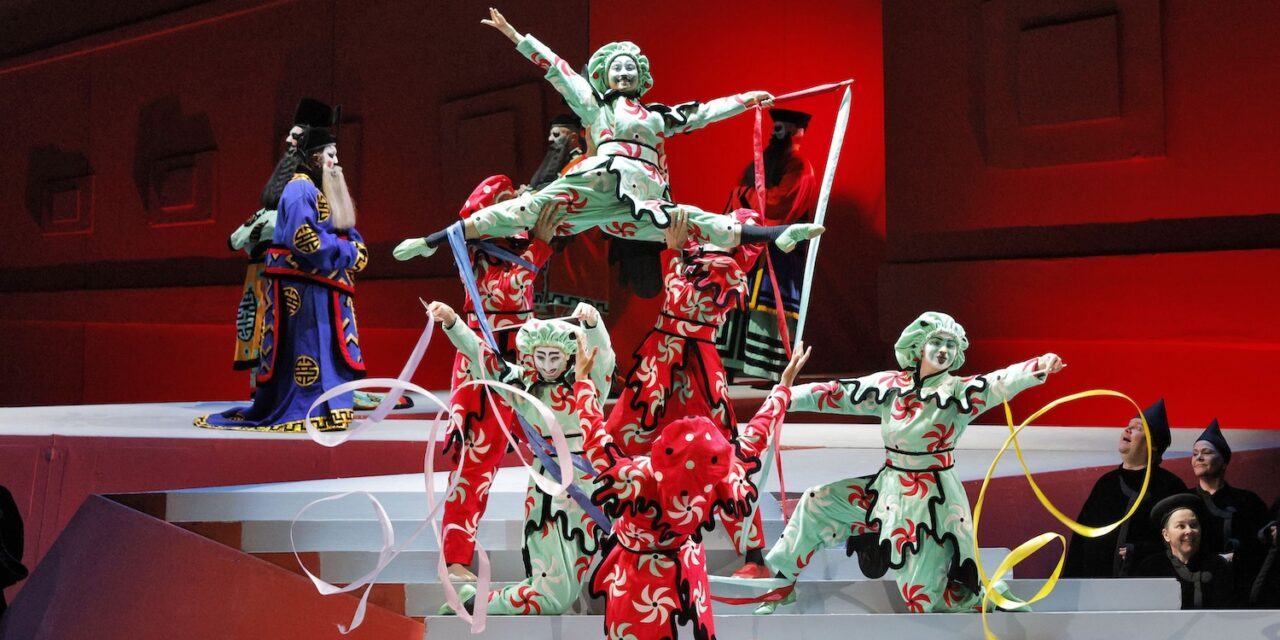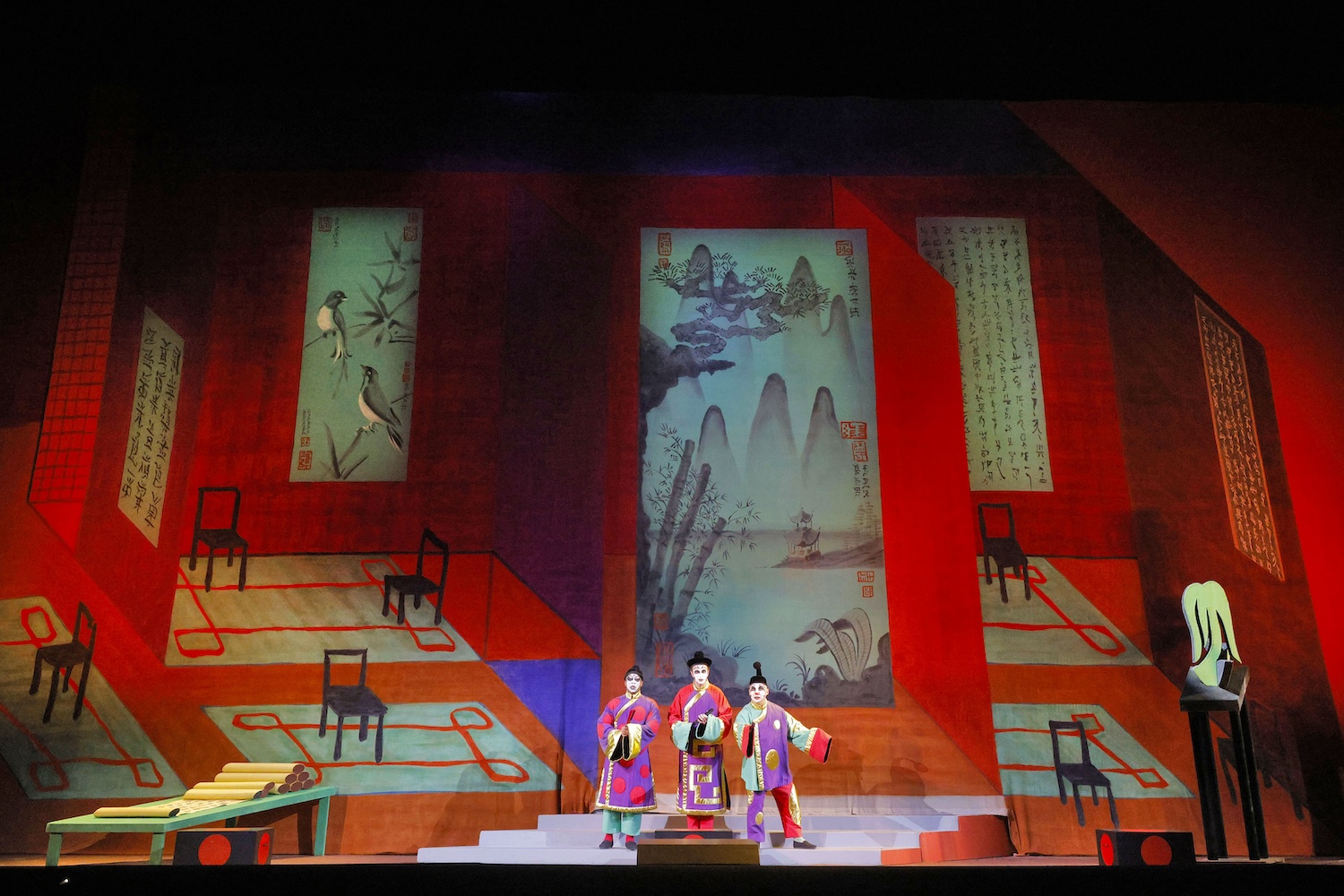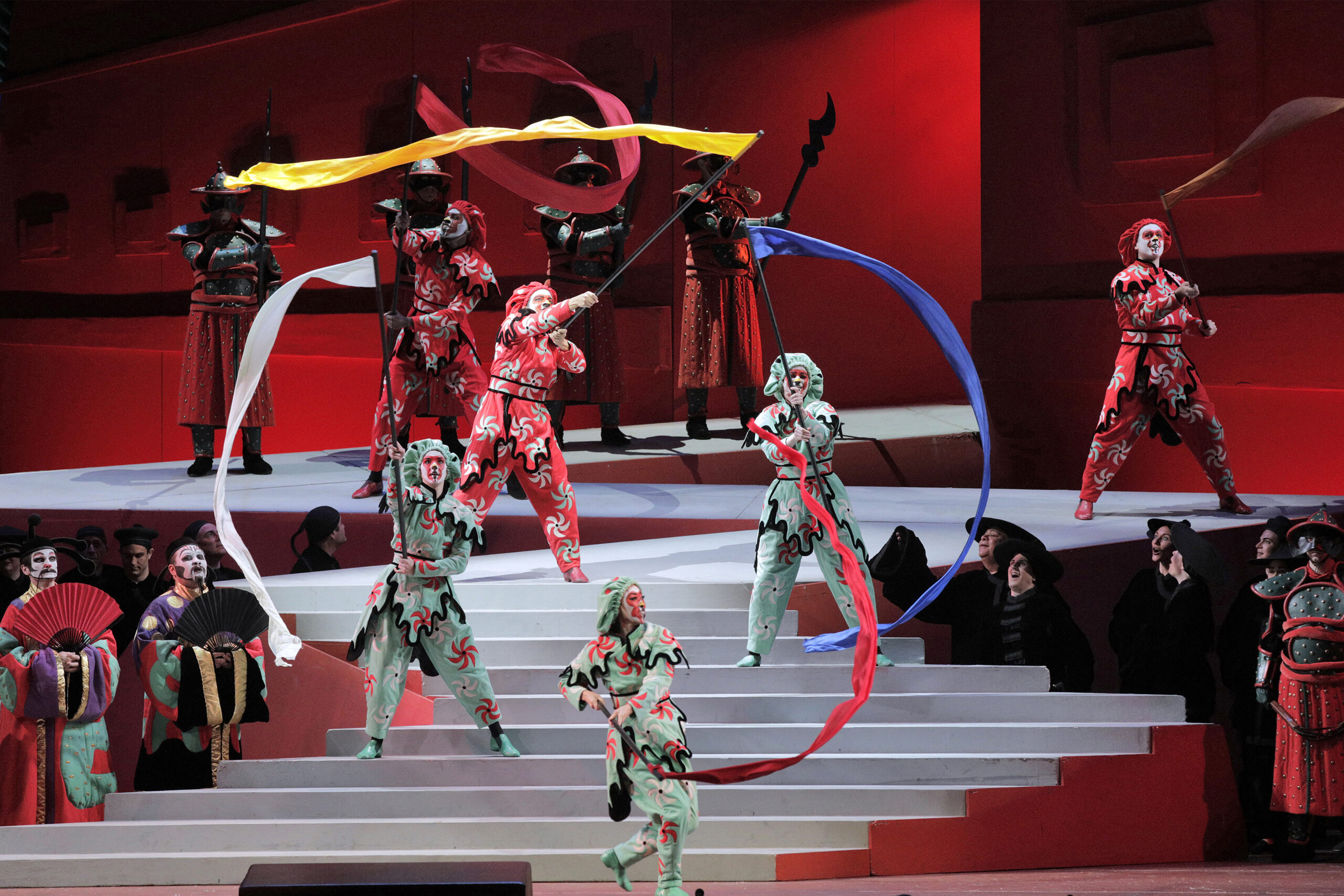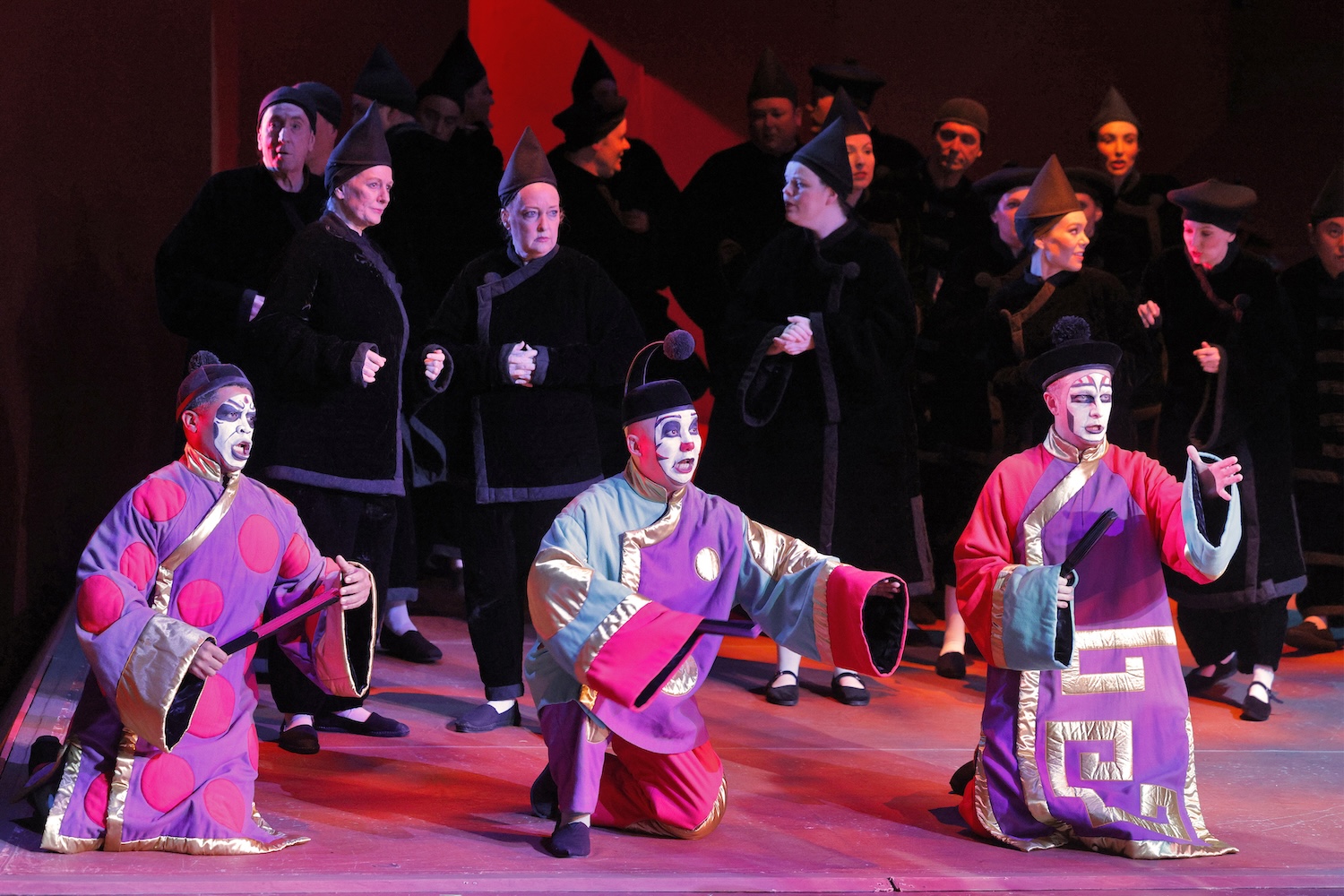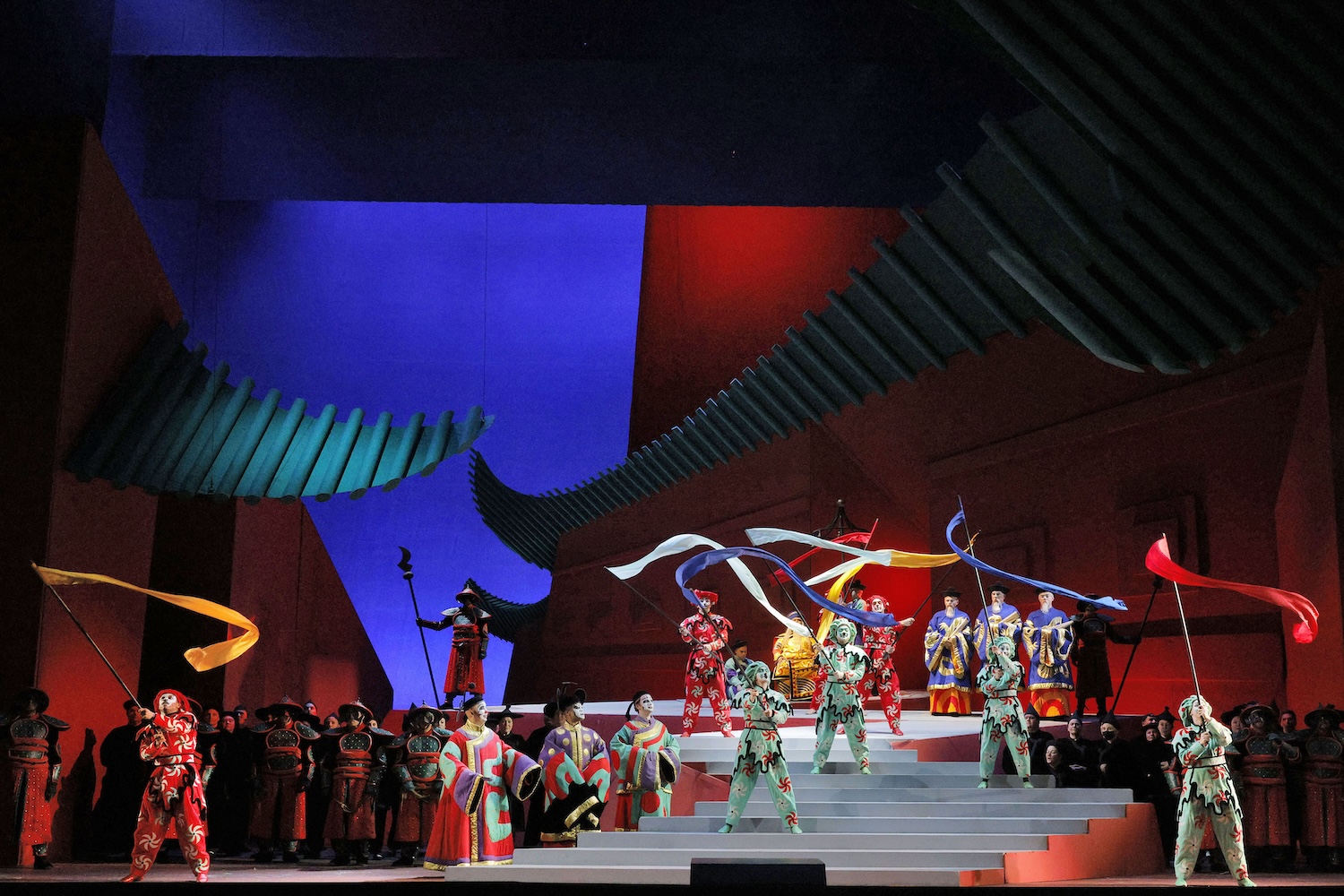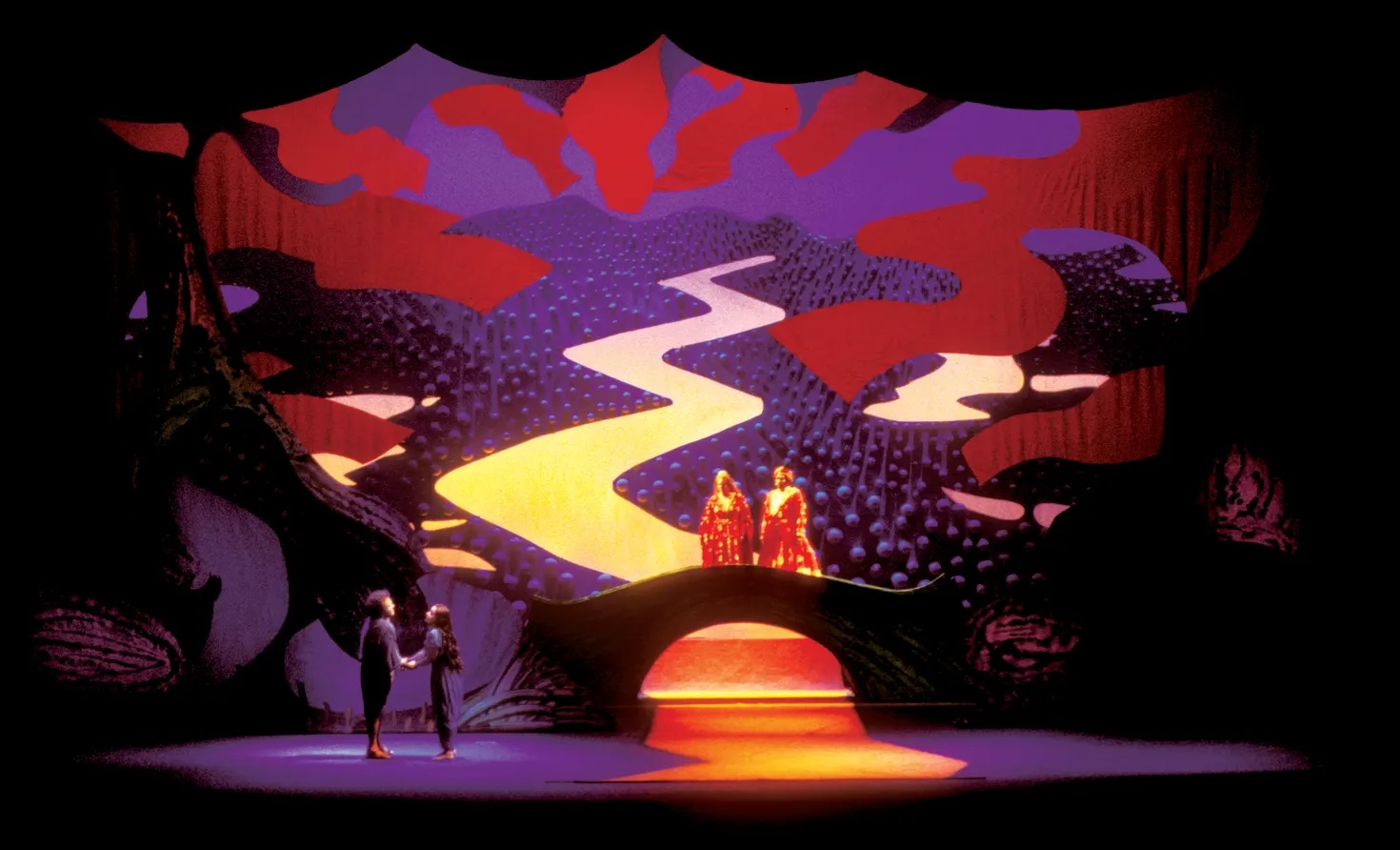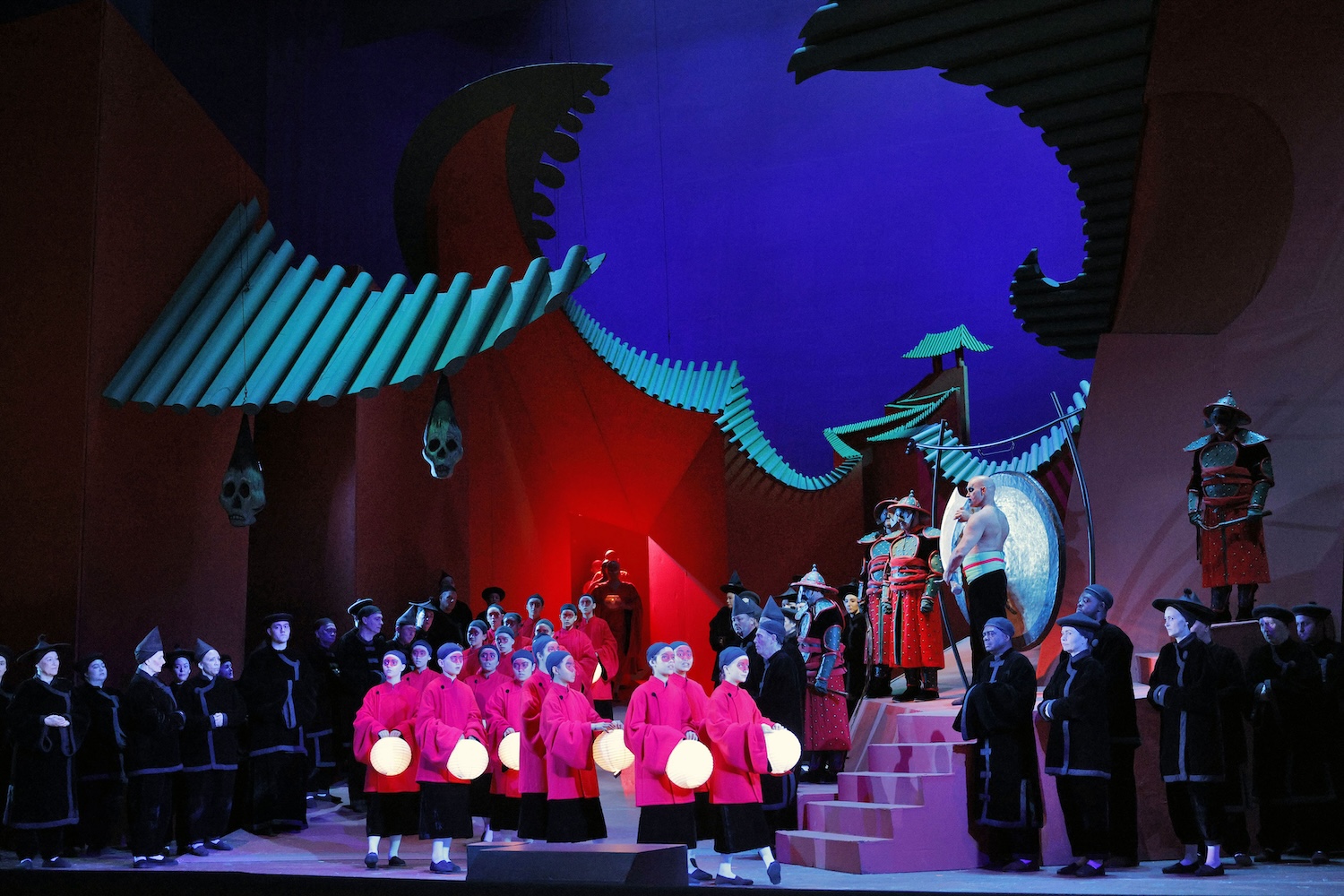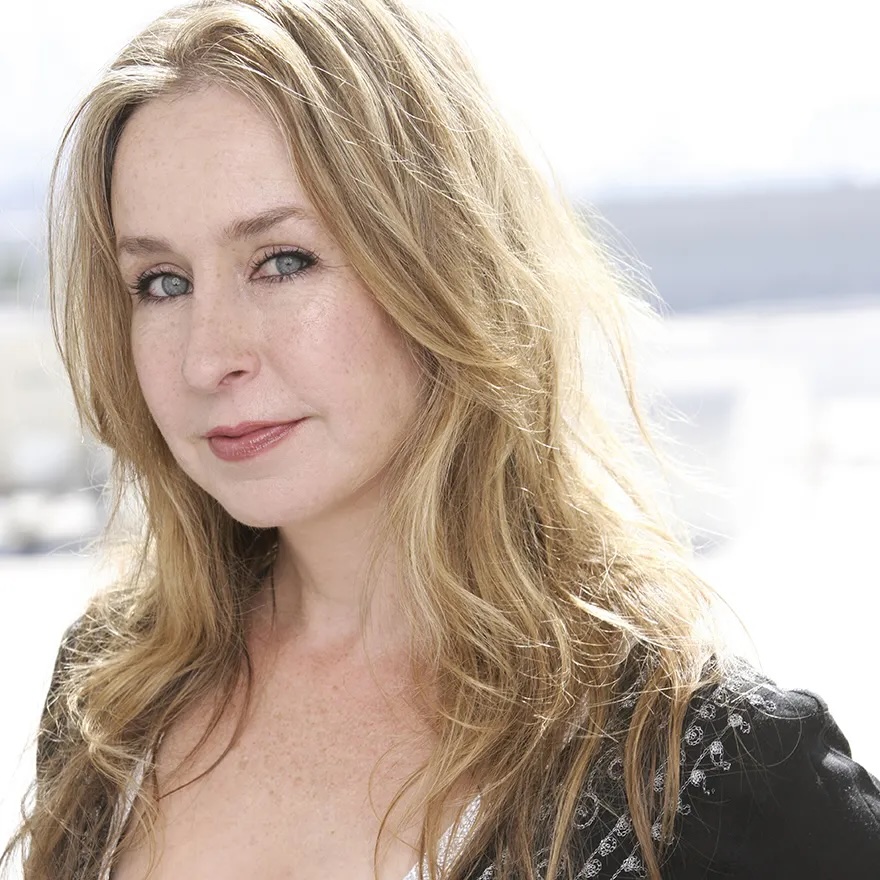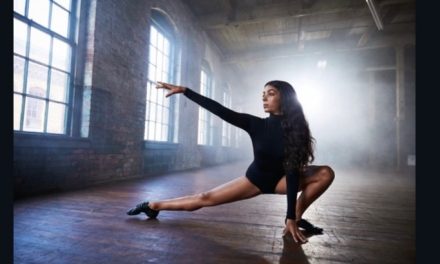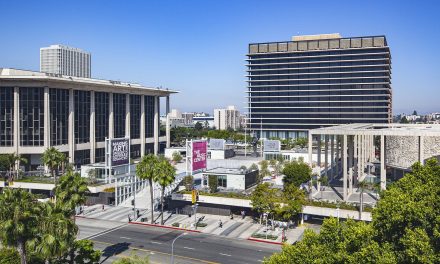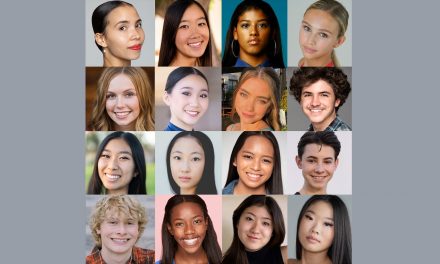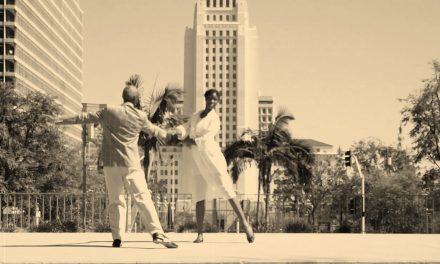Set in a ‘once upon a time’ China designed by celebrated artist David Hockney, LA Opera opens six performances of Puccini’s Turandot. The popular opera has a signature staircase as iconic as that balcony in Romeo and Juliet. For this Turandot, Hockney’s boldly colored sets frame a zig zag stairway for the tale of the emperor’s daughter who will wed only the man who can answer three riddles with any who fail are executed, until Turandot meets her match in Calaf.
One of LA Opera’s go-to choreographers, Kitty McNamee, set the dances for this production of Turandot that is new to LA. McNamee took time from the final rehearsals to talk about how her choreography fit with director Garnett Bruce’s approach to Turandot and the challenges of the iconic Turandot staircase gone zig zag.
LADC: How did you get involved in this production of Turandot?
McNamee: LA Opera called and asked if I would be interested and available. I was really excited because it’s my first Turandot. It has been a pleasure because the director Garnett Bruce was super specific on what the needs were for the production. That made my life easier.
LADC: Where did the director see the dancing fitting in?
McNamee: Garnett focused a lot on the David Hockney set designs which presented certain visual elements that the director wanted to include in the dancing. In our discussions, he emphasized how the number three recurs throughout the opera. And he was very interested in the Act 2 procession down that staircase having some other kind of acrobatic or circusy kind of elements in addition to dance. That gave me permission to kind of go wild. For this production, I hired dancers who are really technically strong and good partners. And then I hired a few sort of contortionist/acrobatic type performers. Then we just put it all in a blender made this really fun, energetic, joyous moment within the action.
As far as dance choreography there are two really specific points in the opera. Each are quite different and both were fun to work on.
One dance section is the point in the story where some seductive women are sent out to tempt Calaf to give up on trying to wed Turandot. It doesn’t work, but the dancers really have fun in giving it a go.
The other section is the big procession in Act 2. When you see the set, there is a giant zigzag stairway where eventually they hold court and the three questions will be asked. But before Turandot enters, before the Emperor comes down, and before Calaf comes out, the dancers and acrobats begin that procession. They spill down the zig zag and fill out the entire stage. Garnett asked if there could be cultural ribbons and colorful banners. He was very specific about wanting the performers’ entrance to bring this burst of like joy and anticipation to that moment, and also interact with the other people who are part of the procession like the dignitaries, the three wise men, and the three comedic bureaucrats Ping, Pang, and Pong.
LADC: That procession sounds sort of Cirque du Soleil meets the opening of the Olympics.
McNamee: Yes, it has that large scale, celebratory feel. It really called for having some height and volume, just a giant boost of energy in that moment of the opera
LADC: Did the number three enter into what you did?
McNamee: It did in a funny way. I have eight dancers. When I started rehearsal, I had all the eight coming together the first day. Then I went home and I thought to myself, ‘that’s just silly’. It hit me. Three. Three. Three. I want to keep the threes. So I went back the next day and I pulled the two contortion/acrobats out and gave them more of a special entrance downstage. I kept the three couples up on the zigzag for the entrance, and it just sort of clicked into place. And then I also pulled out the three in the section where the three dancers vamp Calaf, and again, three dancers for some other moments.
LADC: With the set by David Hockney, what’s distinctive in your mind about this production of Turandot?
McNamee: Well, the color theory makes me crazy, like in the best way, but I don’t I don’t know that that’s really like the right answer. But there’s something about the vibrancy of the set and the color theory that it sort of unlocks something in my brain when I’m looking at it. I don’t really know how can I sound like an intelligent person if I talk about it.
LADC: How does the color theory come into Hockney’s design.,
McNamee: It’s like, well, it’s the combination of colors that are used. Together the colors pop in this sort of visceral way. But it’s also has some weird psychological effect. So if you know what you’re doing, which obviously Hockney does, you can use color and how the colors interact to create an emotional response.
LADC: Are there names for some of the emotions that visceral element provokes for you?
McNamee: Well, it creates tension. I don’t think that’s an emotion but it does create tension. It’s an atmosphere. Then there’s something in Act Three, the combination of the shape of the set and the color, like the intense red and blue coming together. That’s very romantic. To me, it is sensual.
LADC: What I’m hearing is that what music and lighting do to create the atmosphere, to create a world onstage, Hockney uses color to amp up that atmospheric palette.
McNamee: Yes, to do the sorts of things that the music and the lighting otherwise are left to do. Yes, that’s exactly right. And you know, obviously, I’m a very visual person and I respond to music, of course, but the impact of this Turandot visually I think is really special.
LADC: You’ve had your own dance company. You’ve been doing some dance films and you’ve been working with the opera among other things. As a choreographer, is it difficult or different to shift from one to the other?
McNamee: I think it is different. I’m very very, very lucky because I work at the LA Opera and work with the LA Phil, both of those settings having live music. I just feel so so lucky that I get to work with live orchestra. If you think about it, where else in LA do you get to work with live musicians with conductors? And with singers at this caliber? I mean, it’s insane!
Both the opera and the LA Phil are very collaborative. That challenges me in a very real time way, because if adjustments need to be made, I have to make a decision, make the adjustment, make it work. Time is fleeting. The dance film work that I’m doing is the opposite. I do it on my own. It’s lonely. It takes a lot of time and there isn’t the support system that I feel in these other settings.
LADC: Do you miss having your own company and the concert dance aspect of it?
McNamee: I do. I miss that collaborative spirit, which is probably why I like working with the opera. I had an incredible group of dancers, incredible. I miss having that nearly daily interaction with the same people and creating new work all the time, because that’s what we did. We were focusing on making new work, not bringing in other choreographers. So I do miss that aspect of it. I don’t know that in today’s climate if we would be able to survive because of all the rules around finances and the newer rules about hiring people as employees or independent contractors, and things like that. I don’t know if we’d be able to survive right now, but I do miss that sort of family feeling that we had.
LADC: Is it easier or harder providing choreography for an opera where there are guardrails,—a certain number of bodies on the stage and certain props that are stage pieces to work around—than a blank slate for a black box stage?
McNamee: Well, it depends on the constraints. I mean, the zigzagging set in this production is challenging but I like a challenge. So I think, each is just different. If you have a director who’s very clear, even if there are constraints, it’s makes it easier because I know exactly what I’m going for. For the art deco La Traviata, Marta Domingo gave me images and she said “I want these images to come to life.” So I had the shape of all of the movements and I had that art deco period to refer to with its Egyptian craze. If I’m working independently, I make those choices for myself.
LADC: The last time we talked you had choreographed nine or 10 LA Opera productions. What does Turandot bring you to?
McNamee: Oh, let’s see, if I think about the operas themselves, I’ve done Romeo and Juliet twice, soon to be three times. Romeo and Juliet was my first opera at LA Opera and my first opera ever. Then Don Carlo. I’ve done several productions of La Traviata, both the deco production and then the more classic production. Simon Stone did a really modern Lucia di Lamamoor, that was quite an adventure. I did my first Marriage of Figaro last year, and some others, so I’m close to an even dozen.
LADC: What have you learned after choreographing for so many operas that you wished you knew when you walked into that first Romeo and Juliet?
McNamee: I was given very, very good advice for the first opera because they knew my background in concert dance. In choreographing concert dance there’s more getting started and tinkering around. I was given very good advice for that first opera: “Don’t come in and play. Be very prepared. Come in ready to set it, set it, and move on.” And I think what I’ve learned over time is I can never be too prepared. I listen to the music over and over and over and over again until I can hear it in my head. I have the score and I can go through the score, make specific notes, and break down the scene that I’m working on in a way that makes sense. I also do research on whatever period or style the opera is set in, then conversations with the director as much as I can, just to make sure that I’m staying on track. I work with the costume staff to make sure the dancers can move in the costumes, and make alterations so they can. That’s how I prepare. But I think if I were to give myself advice back in the beginning, it would be to keep things simple. I still tend to be a little more complicated than maybe I need to be or maybe I just can’t resist like digging into the music and, you know, extracting as much out of it as I can.
The dancers in Turandot include Anna Dreslinski ,Maxwell Simoes, Isabella Caso, Owen Scarlett, Sierra Fujita, and Kittrell Poe. The acrobat/contortionists are Laurie Deziel and Marc Myron. The covers are Mia Moraru and Jacob Beaver.
LA Opera presents Turandot at the Music Center, Dorothy Chandler Pavilion, 135 N. Grand Ave., downtown; Sun., May 26, 2 pm, Thurs., May 30, 7:30 pm, Sun., June 2, 2 pm, Wed. & Sat., June 5 & 8, 7:30 pm, $39 to $374. https://www.laopera.org/performances/202324-season/turandot/
This article was edited to correct a photo credit on 5/28/24.
Written by Ann Haskins for LA Dance Chronicle.
Featured image: LA Opera’s “Turandot” – photo by Cory Weaver.

